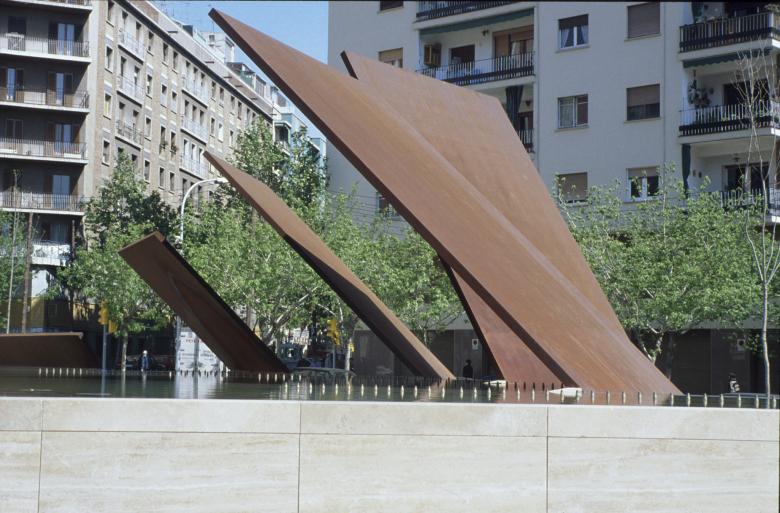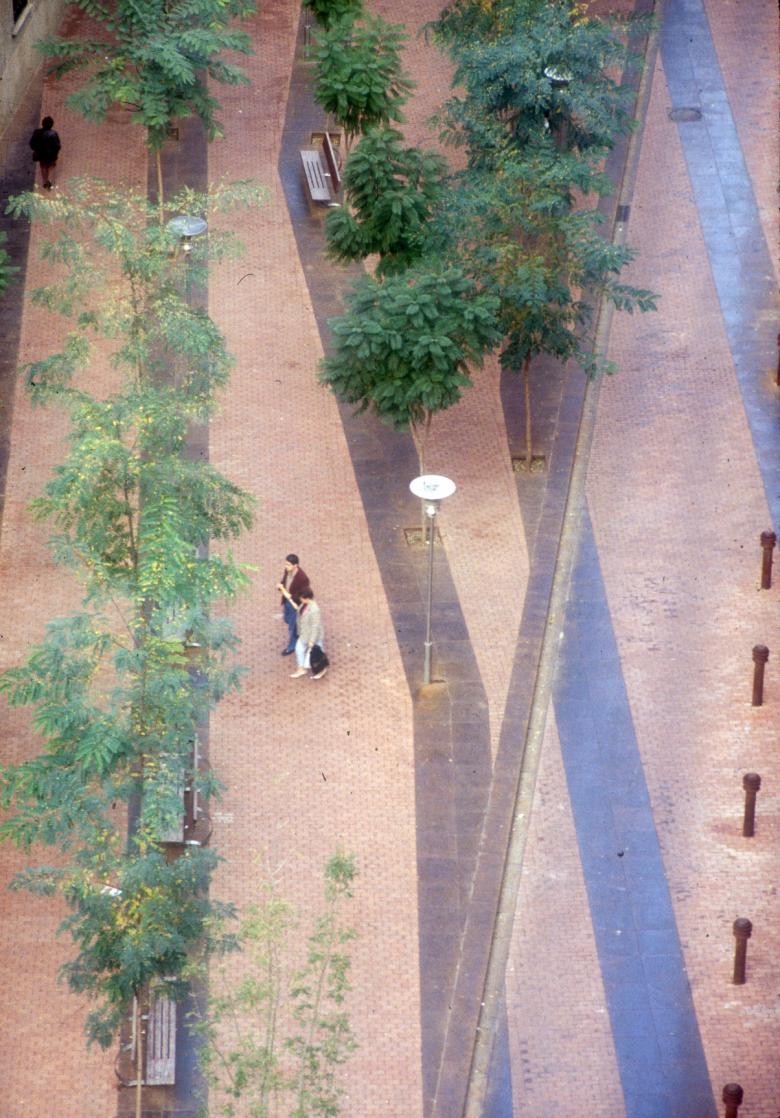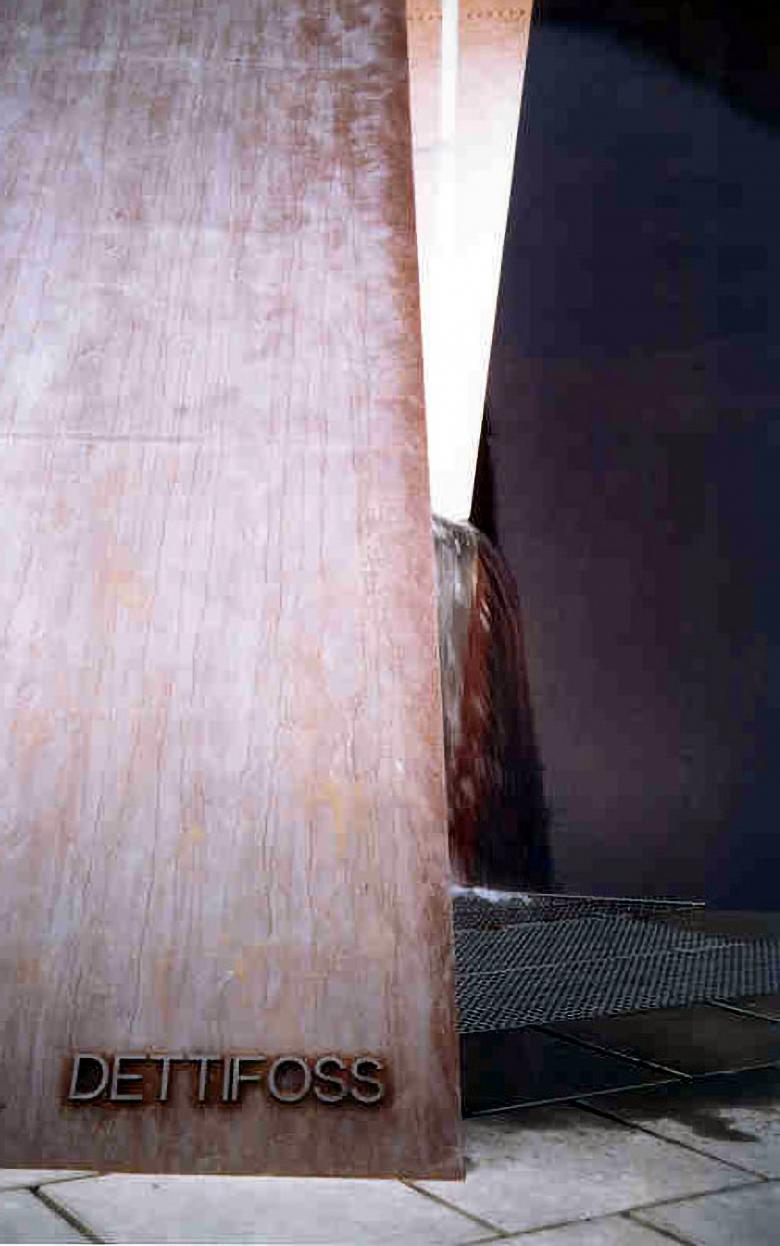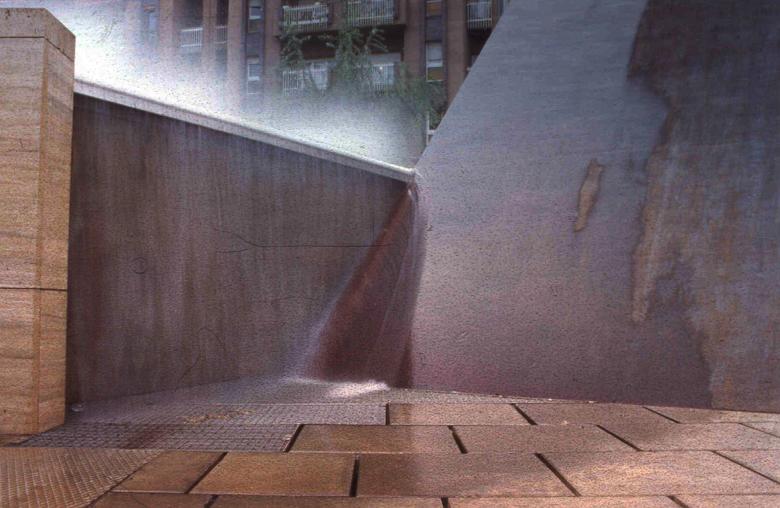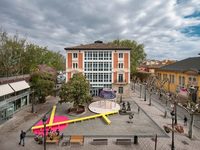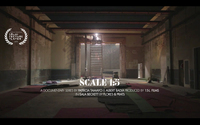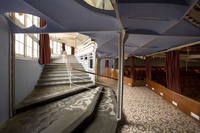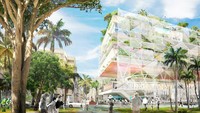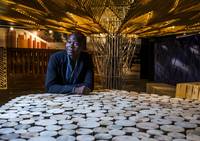Plaça d'Islàndia
Barcelona
The site lies in what used to be one of the outlying areas of Barcelona, which until the middle of the last century was separated from the historic center by a military protection zone. It is just off the Meridiana motorway and through it passes the old Rec Comtal, the canal built to bring water from the river Besòs into the old town center. The whole area was incorporated into the city by the laying out, in the 19th century of the Cerdà grid with its distinctive chamfered corners. Bofarull street however follows the older street pattern aligned to the Rec Comtal, which has all but disappeared under the footprint of the Cartesian grid.
The project for Bofarull recognizes this superimposition of different forms, acknowledging the Cerdà grid as the preeminent one, and Bofarull and the Rec Comtal as historical traces. By opening up Palencia street of the grid, circulation in the area is improved and a new crossing, and triangular plaza are created between Bofarull, Palencia and Espronceda streets. On this is placed a large fountain, evoking the water of the Rec Comtal, and establishing a new symbolic center for the neighborhood.
The continuation of Bofarull each side of the triangle, is perceived as an extension of the riverbed and thus, in this conflict of urban geometries an attempt is made to create a place of calm and tranquility. The design for the paving is generated from lines drawn parallel to the waterway and then manipulated and stretched apart into a more wavelike effect. These provide the setting out for lines of cor-ten/concrete paving slabs developed specifically, separated by terracotta brick paving laid perpendicular to the these lines. They also form the layout for the trees, weeping willows, jacarandas, various types of acacias, and the street-lighting columns. The section across the 20-metered street is asymmetrical with a 13 m. wide pavement and a 7 m. lane, divided by lighting bollards to control access traffic.
The streetlights and furniture are all part of the Flauta Magica series especially designed and an integral part of the project.
The lamps comprise of columns and wall lights with the luminaries a series of deflective rings. The other furniture consists of two sundial drinking fountains, benches, wastepaper bins, planters and the lighting bollards, all with a similar composition of conical forms in cor-ten and stainless steel. The fountain on the chamfer of Palencia and Espronceda forms the heart of the proposal. A seventeen meter high geyser, (donated by Icelandic sponsors, hence the name of the project), highlights the pool which is 2 m. above the lowest point of the
street, and is 15 m. wide and 33 m. long. Five huge metal sheets are set into its rectangular form to open up five waterfalls, (named after five Icelandic waterfalls), down the slope of Espronceda street each crowned by vapor spray clouds. The vertical dimensions of the steel plates vary from 4.5 to 8 meters with a uniform 5 m. width, allowing this "tectonic accident" to respond to the scale of the city junction. The space created by these plates, anchored firmly into the ground, enters the passerby into a relationship of earth, water and life.
- Architekten
- Arriola & Fiol
- Jahr
- 1995
Dazugehörige Projekte
Magazin
-
-
-
-
Un despatx madrileny signa un visionari catalitzador urbà en West Palm Beach
Andrea Pala | 29.11.2018 -
L'arquitectura de Francis Keré en escena en el Museu ICO de Madrid
Andrea Pala | 28.10.2018
